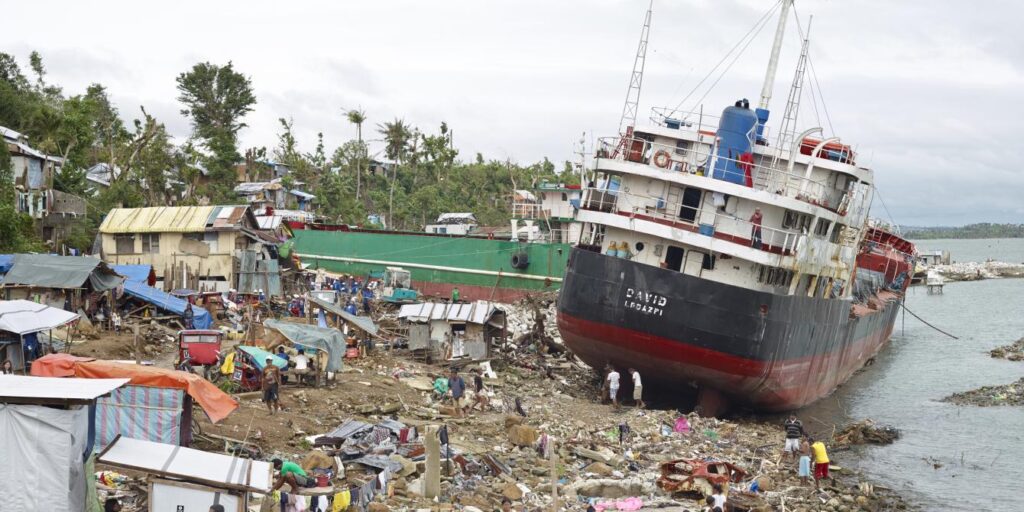Asia’s rapid expansion of renewable energy growth is poised to deliver an array of substantial benefits across the region. As countries and emerging and developing economies increasingly adopt clean energy sources such as wind and solar PV, this transition promises significant opportunities for job creation, improved livelihood opportunities and economic growth.
Concurrently, reducing the reliance on fossil fuels and associated planet-heating greenhouse gas emissions will also lead to lower levels of air and water pollution, thereby improving public health and well-being. Importantly, this shift will help to mitigate climate-induced disasters that are devastating communities across Asia.
The International Energy Agency (IEA) Executive Director Fatih Birol outlined how the exponential renewable energy growth will be a powerful force for good worldwide. “The transition to clean energy is happening worldwide and it’s unstoppable. It’s not a question of ‘if,’ it’s just a matter of ‘how soon’ – and the sooner the better for all of us,” Birol said. “There are immense benefits on offer, including new industrial opportunities and jobs, greater energy security, cleaner air, universal energy access and a safer climate for everyone.”
Renewable Energy Growth Projections
Although Asia remains heavily dependent upon fossil fuels, the continent has made notable strides toward renewable electricity generation. Since 2004, Asian investment in renewables has surged, with an average growth rate of 23% each year that reached USD 345 billion in 2022, highlighted a report by Zero Carbon Analytics. By the end of the same year, renewable energy became more cost-competitive than fossil fuels and surpassed fossil fuel investments in most countries in the region.
Many Asian nations have also set ambitious climate goals such as expanding renewable power capacity, which will address the double challenge of decarbonising energy systems while meeting growing demand.
- China targets having 33% of its electricity supplied by renewables by 2025, with 18% coming from non-hydro sources. Additionally, the country aims for 50% of new electricity demand to be met by renewable energy by 2025.
- India aims to cut cumulative emissions by 1 billion tonnes by 2030, expand its renewable energy capacity to 500 GW and source 50% of its energy from renewables by 2030.
- Vietnam is planning for 30% to 39% of its energy capacity to be renewable by 2030, with a long-term goal of achieving net-zero emissions by 2050.
- Japan is working towards having renewables make up 36% to 38% of its power supply by 2030, doubling the share from 2019.
- Indonesia is seeking to triple its renewable energy share to reach 34% by 2030.

Renewable Energy Growth: Trillion Dollar Opportunities
Investments in renewable energy generation in the Asia-Pacific region are poised to double to USD 1.3 trillion during the current decade to 2030 compared to the previous decade, according to leading energy analysis provider Wood Mackenzie. Today, the Asia-Pacific region is both the largest power generation and renewables market and also the most diverse, said Wood Mackenzie energy transition researcher Jom Madan. “Each nation has different local resources, economic factors and political situations that drive it.”
This rapid renewable energy growth will be accompanied by the adoption of energy storage, hydrogen, small modular nuclear reactors and geothermal technologies. By 2050, the Asia-Pacific region is expected to account for nearly 50% of the world’s new low-carbon technology opportunities, the analysts said.
These investments in renewable energy technologies will benefit energy customers directly, as renewables offer a more secure and affordable supply. Strong renewables deployment over the past two decades led to about USD 199 billion in fossil fuel cost savings in Asia’s electricity sector in 2022 alone, as renewables faced lower price hikes and volatility.
Renewable Power: Opportunities for Livelihoods and Prosperity
This transition to renewable energy will unlock significant benefits for people and communities. Asia is already home to two-thirds of the world’s 12.7 million strong workforce in the renewable energy sector, including hosting 79% of the world’s solar photovoltaic (PV) jobs.

The Asia Pacific is also leading the world as the region with the best green jobs outlook. If investments and policy reforms for renewable energy growth are realised, up to 14.2 million net green jobs can be achieved by 2030, according to the International Labour Organisation (ILO). For example, analysis from global energy think tank Ember shows that Indonesia could create 96,000 high-skilled jobs in coal-producing regions by implementing all existing programs and replacing new coal-fired power plants with solar. Creating new, skilled jobs in coal-producing provinces is key to safeguarding and improving livelihoods and regenerating local economies as part of the just transition to clean energy.
Transitioning Away from Fossil Fuels, A Cleaner Environment and Better Health
The transition away from polluting fossil fuels – which contaminate the water, land and air that we rely on – will also vastly improve the health of people and the environment. For example, much of Asia’s harmful air pollution is driven by the burning of fossil fuels. This pollution is responsible for over 6.5 million deaths each year, with 70% of these occurring in the Asia-Pacific region, alongside illness and disease. Beyond its severe health impacts, air pollution also threatens the region’s economy, food and water security and climate systems.
Clean Global Electricity Generation
Conversely, the shift to clean energy promises a future where energy needs are met through clean, sustainable and renewable sources that safeguard people’s health and well-being. Researchers estimate that accelerating the renewable transition and expanding global renewable capacity could save 181 million years of healthy human life annually by 2050, by reducing the illness, disability and disease burden from the fossil fuel industry.
A Safe and Prosperous Planet
As the clean energy transition gains momentum, concerted action is needed from governments to accelerate change and ensure that the benefits available to people and communities are maximised. The International Renewable Energy Agency (IRENA) emphasises that to achieve this, Asian nations must adopt comprehensive policies that not only provide clean and sufficient energy but also safeguard livelihoods, protect jobs and guarantee that the rewards of this transition are equitably shared. The clean energy transition promises a brighter, safer and more prosperous future, and inclusive action can ensure this future is enjoyed by all.
Evelyn Smail
Writer, United Kingdom
Evelyn is a freelance writer and journalist specialising in climate science and policy, the just energy transition and the human impacts of climate change. She writes for independent publications, NGOs and environmental organisations. Evelyn has a background in sustainable development, climate justice and human rights.
Evelyn is a freelance writer and journalist specialising in climate science and policy, the just energy transition and the human impacts of climate change. She writes for independent publications, NGOs and environmental organisations. Evelyn has a background in sustainable development, climate justice and human rights.
















